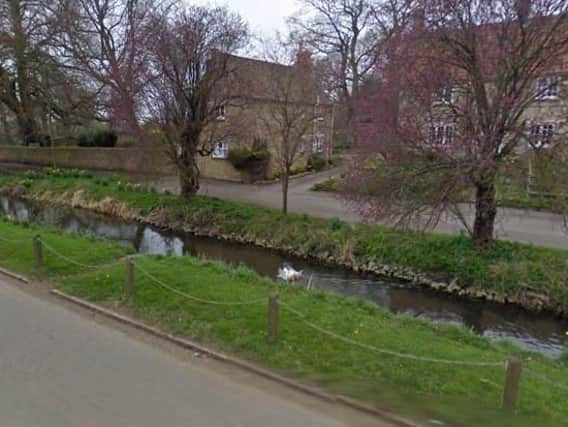Red brick is 'offensive' and would spoil Grafton Underwood says parish council


Chairman of Grafton Underwood Parish Council David Hinckley told Kettering Council’s planning committee on Tuesday (March 12) that the council was against a planned two-storey extension at 27 Cranford Road because of the colour of the brick.
He said: “Grafton Underwood is a perfect village. I can not only leave my door open when I go out, I can leave it unlocked.
Advertisement
Hide AdAdvertisement
Hide Ad“We are very anxious to keep it as pure as it is. I am not against development but I am against this type of development. The red brick is offensive. The majority of houses, some of which date back to the 11th century, are stone.”
The parish council also said it would block out sunlight to the neighbouring house and was too large.
Grafton Underwood was designated a conservation area by the borough council in 1977. Along with Weekley and Warkton it is a former estate village associated with the Duke of Buccleuch’s estate at Boughton. The village was used in Helen Fielding’s Bridget Jones novels as her childhood home.
Applicant Mr M Hillery wanted to knock down an existing extension and replace it with a larger two-storey extension.
Advertisement
Hide AdAdvertisement
Hide AdKettering Council’s planning officers had recommended the application for approval, saying the size of the extension would not be ‘unduly oppressive’.
An officer report considered by the councillors said: “The proposal includes red brick to part of the rear elevation and the side elevation. The front elevation and remainder of the rear elevation would be constructed in stone. It is acknowledged that the vast majority of buildings within the village are constructed in stone (at least those parts visible from the public realm). However, the adjacent outbuilding belonging to 28 Cranford Road is partially constructed from brick.
“In addition, it is considered that it is not unusual to have a mix of stone and brick in historic buildings. The proposed brick would be located on part of the rear elevation and the side elevation, neither of which would be visible from the public realm. As such it is considered that the proposed red brick would not be unduly harmful subject to details and samples of materials being provided, to be secured by condition.”
A number of the councillors were concerned about the material to be used and discussed whether to prescribe what could be allowed.
Advertisement
Hide AdAdvertisement
Hide AdHowever, the council’s development manager Peter Chaplain told the meeting that this type of thing was ‘bread and butter’ to the planning officers who deal with hundreds of similar applications each year.
He said: “If the issue is materials by all means beef up the conditions but it should be left to the officers.”
Three of the six councillors on the planning committee voted to refuse the application, two voted for and one abstained.
The reason for the refusal was the overbearing impact that the extension would have had on the neighbouring property.